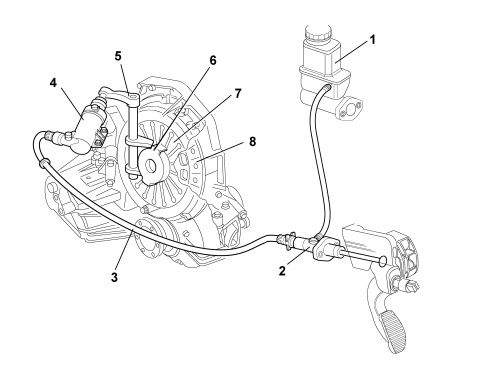199002594 - INTRODUCTION - CLUTCH
CONSTRUCTION SPECIFICATIONS
The clutch is single dry plate type, with a thrust bearing in permanent contact with the pressure spring.The driven plate is driven by pressure exercised by a diaphragm spring. The clutch release takes place via the hydraulic system operated by the pedal.On all versions friction materials free from non-environmentally friendly components have been adopted; special care has been taken in the development of new materials and the clutch assembly with a view to guaranteeing excellent performance in terms of modulation and driving comfort with a consequent reduction in weight compared with traditional hydraulic operation. In particular the clutch pump has undergone a considerable improvement compared with the components usually adopted; it is equipped with:- plastic casing with a further contribution to the reduction in the weight;- steel cylinder;- plastic material piston.The material of the piston and the rubber seals have been developed specifically to operate with long strokes; in addition the seal produced by the rubber-steel contact is excellent compared with traditional type clutch pumps where the seal was produced on cast iron.COMPOSITION
The system consists of:- a clutch pump (master cylinder) (2) fastened to the pedal assembly that compresses the oil;- a pipe (3) connecting the pump and the clutch operating cylinder;- a clutch operating cylinder (4) fastened to the gearbox;- linkage (5) operating the thrust bearing;- a thrust bearing (6);- a clutch drip tray with diaphragm springs (7);- a clutch plate (8);- a fluid reservoir (1) shared with the braking system.
| On right hand drive versions only, the system has a vibration damper, fitted on the supply pipe to the operating cylinder. |